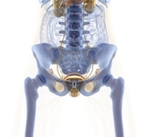*Pelvic Organ Prolapse (POP) and PT
 Wednesday, February 2, 2011 at 07:58PM
Wednesday, February 2, 2011 at 07:58PM Pelvic organ prolapse is the dropping of a pelvic organ into the vaginal cavity and may actually protrude from the vaginal opening. The bladder is the most common organ involved, although this can also occur to the rectum, intestines, or uterus. Symptoms may include a heavy feeling in the pelvis or leakage of urine. It can be caused by weakness in the pelvic floor muscle or loss of the structures that support the pelvic floor organs. This can be seen with pregnancy and childbirth (especially after multiple vaginal births) or simply the aging and loss of the supportive function and weakness of the pelvic floor.
Common types of prolapse include:
- Cystocele: dropped bladder
- Rectocele: dropped rectum
- Entrocele: dropped small intestine
- Uterine: dropped uterus
Conservative Physical Therapy Management of pelvic organ prolapse due to pelvic floor dysfunction may include:
- modalities such as heat and ice
- Manual Therapy: “hands on” treatment to improve pain and restore function and movement.
- Mobilization and Manipulation: movement of a joint to improve pain and restore functional movement.
- Therapeutic exercise: specific exercise to improve pain and restore functional movement.
- Functional Movement Training: exercises to improve posture and movement
- Kegel exercises or pelvic floor retraining: exercise to correct pelvic floor muscle. dysfunction. It is important to get proper training in doing this exercise correctly to avoid problems.
- Biofeedback: a way of using a computer or other device to “see” and improve body functions such as muscle activity or indicators of stress. Also used to “see” the function of the pelvic floor muscle to improve therapeutic exercise.
- Electrical Stimulation or TENS: used to help improve pain, inflammation, muscle spasm, muscle function, and circulation.
Not all physical therapists work with the pelvic floor. There are women's health physical therapists who specialize in pelvic floor rehabilitation. They work with conditions that may include incontinence, pelvic pain, pregnancy, and osteoporosis. You can get more information on this specialty area of physical therapy or locate a PT who works with these conditions at the website for the Section on Women's Health of the American Physical Therapy Association here.
*Links are given to provide a general overview of a topic and not intended to suggest complete or authoritative information on a particular subject. The information provided is always subject to change.*

Reader Comments